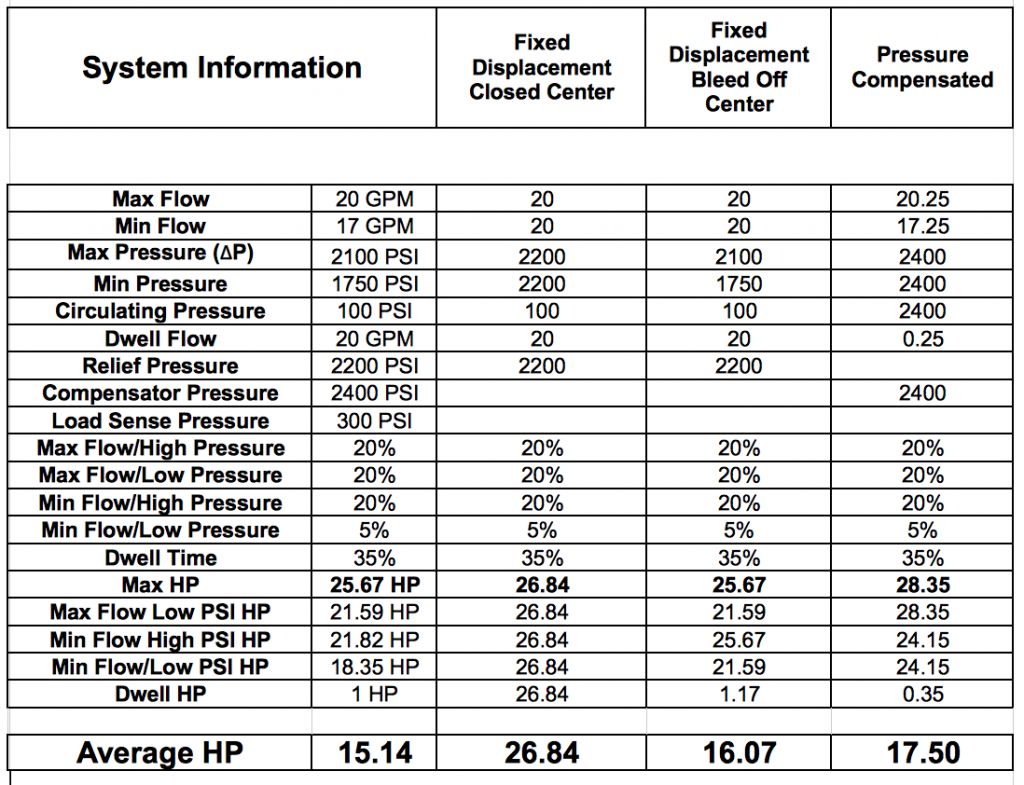Pressure Compensated Pumps
I need a volunteer. Ok, you with the shirt that has the official International Fluid Power Society logo on it; go to your stack of Fluid Power Journal magazines and get the March/April 2009 issue. It’s the one with the picture of an excavator on the cover and really interesting article about Biohydraulic Oils. Yes, that’s the one. Hold it up so everyone can see it. Now, the rest of you go get your copies as well… Does everyone have a copy? For those of you who don’t have a copy for some reason; you can look on with someone else. Turn to page 21, to the article entitled “Power Factor”. Has everybody found it? Good! We are going to use some of the information here as a starting point to discuss pressure compensated pumps and how they fit in our goal to provide energy efficient systems.
Before we begin, I need to make a correction in that earlier article. I’m a little surprised that no one challenged me about it. In the fourth column, about 1/3 of the way down, I have this sentence, “They describe their power production in terms of VAR (Volt-Amp-Reactive) while we tend to only think of the kW on our end.” It should read, “They describe their power production in terms of kVA while we tend to only think of the kW on our end.” The concept is the same, I was just using the wrong term. If you would make that correction, I will appreciate it. Thank you.
I think I may have a surprise for you. We will look at a system and try three different methods of applying hydraulics and see which is best from an energy perspective. The system is this: a hydraulic pump needs to supply a varying flow at varying pressures to do some work. We will use a fixed displacement pump, a relief valve, and a metering directional control valve that has a center condition with all ports blocked. We will then try a fixed displacement pump, a relief valve, and a metering directional control valve with a center condition where all pump flow goes to tank (a bleed off circuit). We will then try a pressure compensated pump and a metering directional control valve with a center condition having all ports blocked. (See circuits below). We will look at 1 hour of operation for each of the systems.
Let’s see a show of hands. How many of you think the first application will be the most efficient? I see three hands. Ok, how many think the second option will be most efficient? I see 12 hands. How many think the third option will be the best? Wow! Number three is the big favorite.
Now, let’s do the math. For those of you who are not yet Fluid Power Professionals, we will be using the formula HP = (GPM x psi) / 1714.
In the first instance, we will have a pump that produces 22 gpm to be sure we have enough flow. We will set the relief valve at 2200 psi to be sure we have enough pressure to do the work. What do we find? For 60 minutes we will be producing 22 gpm at 2200 psi or 28.24 hp for an average of 28.24 hp.
In the second instance, we will also use a 22 gpm pump and a relief set at 2200 psi. What do we see? For 18 minutes we will use 22 gpm at 2000 psi or 25.67 hp. For 18 minutes we will use 22 gpm at 1500 psi or 19.25 hp. For another 18 minutes we will use 22 gpm at 2000 psi or 25.67 hp. For 6 minutes we will use 22 gpm at 100 psi or 1.28 hp.






